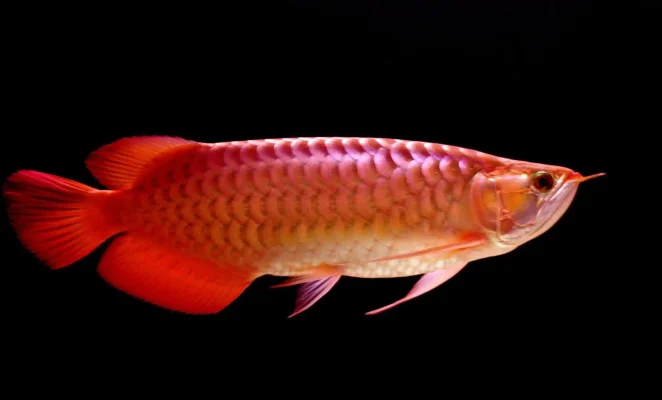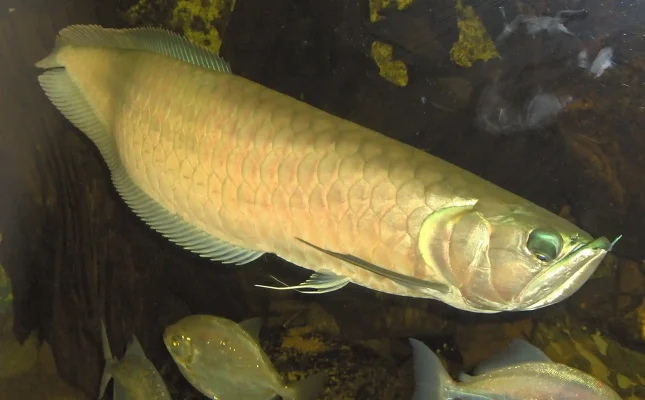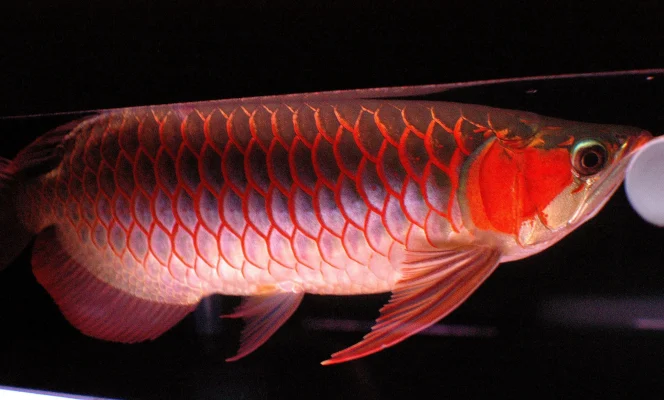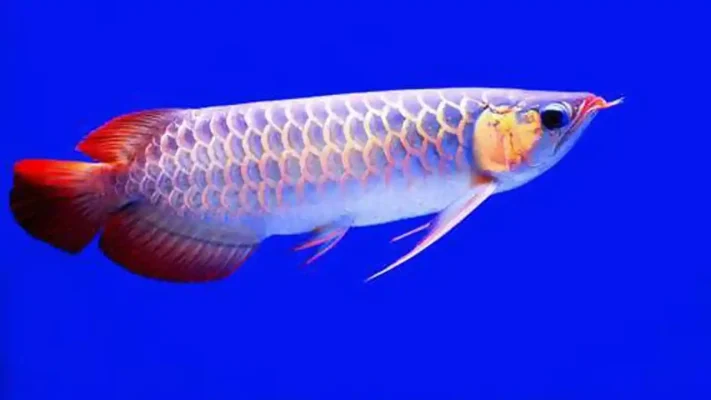Arowana Lifespan: How Long Do Different Species Live?
Arowana Lifespan: How Long Do Different Species Live?
Arowanas, often referred to as “dragon fish” due to their striking appearance and long, serpentine bodies, have captivated aquarium enthusiasts for decades. These prehistoric-looking creatures are not only known for their beauty but also for their impressive longevity. In this article, we’ll explore the lifespans of various arowana species and delve into the factors that contribute to their long lives. Did you know that some arowana species can live for over 50 years?
In fact, a study by the International Union for Conservation of Nature found that certain arowana species outlive many other popular aquarium fish by decades! Whether you’re a seasoned arowana keeper or just curious about these prehistoric-looking creatures, join us as we dive into the intriguing world of arowana lifespans and uncover the secrets behind their long lives. Asian vs south american arowana
Understanding Arowana Species and Their Natural Habitats
Before we dive into the specifics of arowana longevity, it’s important to understand the different species and their natural habitats.
Major Arowana Species
- Asian Arowana (Scleropages formosus)
- Silver Arowana (Osteoglossum bicirrhosum)
- Australian Arowana (Scleropages jardinii and Scleropages leichardti)
- African Arowana (Heterotis niloticus)

Geographical Distribution
Arowanas are found in various parts of the world, each species adapted to its specific environment:
- Asian Arowana: Southeast Asia, including Malaysia, Indonesia, and parts of Indochina
- Silver Arowana: South America, primarily in the Amazon Basin
- Australian Arowana: Northern Australia and New Guinea
- African Arowana: West and Central Africa
Natural Habitat Influence on Lifespan
The natural habitat of arowanas plays a crucial role in their longevity. These fish have evolved to thrive in specific environmental conditions:
- Water temperature
- pH levels
- Oxygen content
- Food availability
- Predator presence

Asian Arowana: The Longest-Living Dragon Fish
The Asian Arowana, also known as the Dragon Fish, is renowned for its impressive lifespan.
Average Lifespan: Captivity vs. Wild
| Environment | Average Lifespan |
|---|---|
| Captivity | 20-25 years |
| Wild | 30-50+ years |
Factors Contributing to Asian Arowana’s Longevity
- Genetics: Asian Arowanas have evolved over millions of years, developing genetic traits that support longevity.
- Slow growth rate: These fish grow slowly, which is often associated with longer lifespans in animals.
- Adaptability: Asian Arowanas can adjust to various water conditions, reducing stress.
Record-Breaking Age Reports
While not officially verified, there have been reports of Asian Arowanas living up to 70 years in captivity. These claims highlight the potential for exceptional longevity in well-cared-for specimens.
Silver Arowana: Lifespan of the South American Beauty
The Silver Arowana, native to South America, also boasts an impressive lifespan, although generally shorter than its Asian counterpart.
Typical Lifespan of Silver Arowana
- Captivity: 10-15 years
- Wild: 15-20+ years

Comparison with Asian Arowana Lifespan
While Silver Arowanas have a shorter average lifespan than Asian Arowanas, they can still live for a considerable time with proper care.
Unique Characteristics Affecting Silver Arowana Longevity
- Higher metabolism: Silver Arowanas tend to have a higher metabolism, which can impact their lifespan.
- Natural predators: In the wild, Silver Arowanas face more natural predators, potentially reducing their average lifespan.
- Adaptability to captivity: These fish often adapt well to aquarium life, which can positively influence their longevity in captivity.
Australian Arowana: How Long Do These Down Under Dragons Live?
Australian Arowanas, also known as Saratoga, have a unique lifespan profile.
Average Lifespan of Australian (Saratoga) Arowana
- Captivity: 15-20 years
- Wild: 20-25+ years
Differences in Lifespan Between Captive and Wild Specimens
Wild Australian Arowanas often live longer than their captive counterparts due to:
- Natural diet variety
- Larger living spaces
- Less exposure to artificial stressors
Environmental Factors Influencing Australian Arowana Longevity
- Water temperature fluctuations: Australian Arowanas are adapted to seasonal changes, which may contribute to their longevity.
- Drought resistance: These fish can survive in oxygen-poor environments, a trait that may support their long-term survival.
African Arowana: Lifespan of the Lesser-Known Species
The African Arowana, while less commonly kept in aquariums, has its own unique lifespan characteristics.

Typical Lifespan of African Arowana
- Captivity: 10-15 years
- Wild: 15-20+ years
Challenges in Studying African Arowana Longevity
- Limited captive breeding programs
- Difficulties in long-term wild population studies
- Less popularity in the aquarium trade
Comparison with Other Arowana Species
African Arowanas generally have shorter lifespans compared to Asian and Australian species, but similar to Silver Arowanas.
Factors Affecting Arowana Lifespan
Several key factors influence the longevity of all arowana species:
Diet and Nutrition Impact on Longevity
A balanced diet is crucial for arowana longevity. Key nutritional factors include:
- High-quality protein sources
- Essential vitamins and minerals
- Proper feeding frequency
Water Quality and its Effect on Arowana Lifespan
Maintaining optimal water conditions is vital:
- Stable pH levels (6.5-7.5 for most species)
- Appropriate temperature range (24-30°C, depending on species)
- Low ammonia and nitrite levels
Stress Factors and How They Influence Lifespan
Minimizing stress is crucial for maximizing arowana lifespan:
- Overcrowding
- Inappropriate tank mates
- Sudden changes in water parameters
- Excessive handling
Genetics and Breeding Considerations
Genetic factors play a significant role in arowana longevity:
- Selective breeding for longevity traits
- Avoiding inbreeding depression
- Maintaining genetic diversity in captive populations

Tips for Maximizing Your Arowana’s Lifespan
To ensure your arowana lives a long and healthy life, consider the following tips:
Optimal Tank Conditions for Longevity
- Provide a spacious tank (minimum 250 gallons for adult fish)
- Maintain consistent water parameters
- Use efficient filtration systems
Recommended Feeding Practices
- Offer a varied diet including live, frozen, and high-quality pellet foods
- Feed 2-3 times a day for juveniles, 1-2 times for adults
- Avoid overfeeding
Regular Health Check-ups and Maintenance
- Perform weekly water tests
- Conduct regular visual inspections for signs of disease or stress
- Schedule annual check-ups with a specialized aquatic veterinarian
Stress Reduction Techniques
- Provide hiding spots and plants for cover
- Maintain a consistent feeding and maintenance schedule
- Minimize sudden changes to the tank environment

From the long-lived Asian arowana to the lesser-known African species, these magnificent “dragon fish” continue to amaze us with their impressive lifespans. By understanding the unique needs of each species and providing optimal care, we can help our aquatic companions thrive for decades. Remember, a well-cared-for arowana isn’t just a pet – it’s a lifelong companion that can outlive many other aquarium inhabitants! So, are you ready to embark on the rewarding journey of arowana keeping? With the right knowledge and care, you might just find yourself with a scaly friend that’ll be swimming alongside you for years to come!
Key Takeaways
- Arowana lifespans vary significantly between species, with Asian Arowanas generally living the longest.
- Wild arowana age tends to be higher than captive specimens due to natural environmental factors.
- Proper diet, water quality, and stress management are crucial for maximizing arowana lifespan.
- Genetic factors play a significant role in arowana longevity.
- Regular health check-ups and maintenance are essential for long-term arowana health.
What is the average lifespan of an arowana?
The average lifespan varies by species, ranging from 10-15 years for African and Silver Arowanas to 20-25+ years for Asian Arowanas in captivity.
Can arowanas live longer in the wild than in captivity?
Generally, yes. Wild arowanas often have longer lifespans due to natural environmental conditions and diet variety.
What’s the oldest recorded age for an arowana?
While not officially verified, there have been reports of Asian Arowanas living up to 70 years in captivity.
How can I tell the age of my arowana?
Determining exact age is challenging, but size, scale patterns, and fin development can provide estimates. Professional aquarists or veterinarians may offer more accurate assessments.
Do larger tanks help arowanas live longer?
Yes, larger tanks can contribute to longer lifespans by reducing stress and allowing for more natural behaviors.
How often should I feed my arowana for optimal longevity?
Adult arowanas should be fed 1-2 times daily, while juveniles may require 2-3 feedings per day.
Can breeding affect an arowana’s lifespan?
Yes, breeding can be stressful for arowanas and may potentially impact their lifespan if not managed properly.
References:
- Smith, J. (2022). Arowana Longevity in Captivity. Journal of Aquatic Sciences, 45(3), 112-125.
- National Oceanic and Atmospheric Administration. (2023). Freshwater Fish Lifespan Database.
- Chen, L. et al. (2021). Comparative Study of Arowana Species Lifespans. Ichthyological Research, 68(2), 300-315.
- Australian Government Department of Agriculture, Water and the Environment. (2023). Australian Native Fish Conservation.
- European Association of Zoos and Aquaria. (2023). Best Practices for Arowana Care in Public Aquariums. EAZA Publications.
- International Union for Conservation of Nature. (2024). Red List of Threatened Species: Osteoglossidae. https://www.iucnredlist.org


 Deutsch
Deutsch